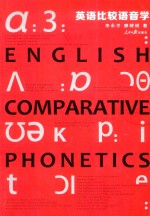

英语比较语音学PDF电子书下载
- 电子书积分:10 积分如何计算积分?
- 作 者:李永才,廖绒绒著
- 出 版 社:北京:人民日报出版社
- 出版年份:2015
- ISBN:9787511530455
- 页数:245 页
第一章 绪论(Introduction) 1
1.1 英语语音教学的回顾(Brief Review on the History of English Phonetics Teaching) 3
1.1.1 早期的英语语音教学(Early English Phonetics Teaching) 3
1.1.2 语言教学流派对英语语音教学的影响(The Influence of Language Teaching Schools upon English Phonetics Teaching) 4
1.2 语言迁移理论(Theory of Language Transfer) 6
1.3 对比语言学理论(Theory of Contrastive Linguistics) 7
1.4 行为主义语言迁移论与语言对比分析假设(Theory of Behavorist Language Trasfer and Hypothesis of Language Constractive Analysis) 7
1.5 学习语音的方法(Ways of Learning English Phonetic) 8
1.5.1 学习语音的重要意义(The Importance of Learning English Phonetics) 8
1.5.2 利用对比分析,提高英语语音学习(Improving English Phonetics Learning Instructed by Contrastive Linguistics) 10
第二章 英语语音(English Phonetics) 17
2.1 语音(Phonetics) 19
2.2 音标(Phonetic Alphabet) 19
2.3 英语标准发音(Standard English Pronunciation) 20
第三章 英语音素(English Phonemes) 23
3.1 英语元音的分类(Classification of English Vowels) 25
3.2 英语辅音的分类(Classification of English Consonants) 27
第四章 英语元音的发音(Pronunciation of English Vowels) 29
4.1 单元音(Pure Vowels) 31
4.1.1 前元音(Front Vowels) 31
4.1.2 中元音(Central Vowels) 35
4.1.3 后元音(Back Vowels) 37
4.1.4 英汉单元音对比(Comparison of English and Chinese Pure Vowels) 41
4.2 双元音(Diphthongs) 43
4.2.1 合口双元音(Closing Diphthongs) 44
4.2.2 集中双元音(Centering Diphthongs) 47
4.2.3 英汉双元音对比(Comparison of English and Chinese Diphthongs) 49
第五章 英语辅音的发音(Pronunciation of English Consonants) 51
5.1 爆破音(Plosives) 53
5.2 摩擦音(Frictives) 55
5.3 破擦音(Affricates) 59
5.4 无摩擦的连续音(Frictionless Continuant) 60
5.5 舌侧音(Lateral) 61
5.6 鼻音(Nasals) 62
5.7 半元音(Semi-vowels) 64
5.8 英汉辅音对比(Comparison of English and Chinese Consonants) 66
第六章 音节(Syllables) 69
6.1 音节的定义(Definition of Syllables) 71
6.2 音节的划分(Syllabe Division) 72
6.3 拼法音节(Orthographical syllable) 74
6.4 开音节(Open Syllables) 76
6.5 闭音节(Closed Syllables) 76
6.6 字母-r音节(-r Syllables) 76
6.7 —re音节(-re Syllables) 77
6.8 字母组合音节(Syllables of Combined Letters) 77
6.9 英语音节的特点及英汉音节特点对比(Characteristics of English Syllables and Comparison between English and Chinese Syllables) 79
第七章 辅音连缀(Consonant Clusters) 81
7.1 词首辅音连缀(Initial Clusters) 83
7.2 词中辅音连缀(Medial Clusters) 83
7.3 词尾辅音连缀(Final Clusters) 83
7.4 我国学习者在辅音连缀方面常犯的错误(Students’ Mistakes in Consonant Clusters) 84
第八章 音变(Sound Varieties) 87
8.1 不完全爆破(Incomplete Plosion) 89
8.1.1 爆破音+爆破音(Plosive+Plosive) 89
8.1.2 爆破音+摩擦音(Plosive+Fricative) 90
8.1.3 爆破音+破擦音(Plosive+Affricate) 90
8.1.4 爆破音+鼻辅音(Plosive+Nasal) 90
8.1.5 爆破音+舌侧音/l/ (Plosive+Lateral) 91
8.2 连读(Liaison) 92
8.2.1 辅音+元音(Consonant +Vowel) 92
8.2.2 -r/-re+元音(-r /- re + Vowel) 92
8.2.3 元音+元音(Vowel+Vowel) 93
8.2.4 连读在汉语中的相似表现形式(Similar Forms of Liaison in Chinese) 94
8.3 同化(Assimilation) 98
8.3.1 顺行同化(Progresive Assimilation) 99
8.3.2 逆行同化(Regressive Assimilation) 100
8.3.3 相互同化(Reciprocal Assimilation) 100
8.3.4 元音的同化(Vowel Assimilation) 101
8.3.5 同化在汉语中的相似表现形式(Similar Forms of Assimilation in Chinese) 102
8.4 弱化(Weak Form) 104
8.4.1 弱化的方法(Methods of Weak Forms) 104
8.4.2 元音字母和部分字母组合弱化的规则(Principles of Vowel Letters and Some Letter Combinations) 105
8.4.3 强式与弱式的对比(Comparision Between Strong Forms and Weak Forms) 106
8.4.4 需要使用强读形式的情况(Cases of Using Strong Forms) 108
8.4.5 弱化在汉语中的相似表现形式(Similar Forms of Weak Form in Chinese) 109
8.5 省音(Elision) 111
8.5.1 历史性的省音(Historical Elision) 111
8.5.2 语境省音(Contextual Elision) 112
8.5.3 省音在汉语中的相似表现形式(Similar Forms of Elision in Chinese) 112
8.6 浊化(Nutralization) 113
第九章 停顿、意群和气群(Pausing, Sense Group and Breath Group) 115
9.1 停顿(Pausing) 117
9.2 意群(Sense Group) 117
9.3 气群(Breath Group) 119
第十章 重音(Stress) 121
10.1 单词重音(Word Stress) 123
10.1.1 词重音的一般规律(General Rules for Primary Stress) 123
10.1.2 次重音的一般规律(General Rules for Secondary Stress) 124
10.1.3 主重音、次重音与双重音或均重音的比较(Comparison for Stress,Secondary Stress, Double Stress or Even Stress) 125
10.1.4 重音区别词性与表意功能的规律(Rules of Word Stress in Distinguishing Part of Speech and Function) 125
10.1.5 复合词和词组的重音(Stress Rules of Stress of Compounding and Phrases) 126
10.1.6 英汉词重音的差异(The Differences of Word Stress Between English and Chinese) 128
10.1.7 我国学习者在单词重音方面常犯的错误(Mistakes Ofen Made by Chinese Learners in Word Stress) 129
10.2 语句重音(Sentence Stress) 132
10.2.1 英语句子重音的概念(Definition of Sentence Stress) 132
10.2.2 表意重音(Sense Stress) 133
10.2.3 逻辑重音(Logical Stress) 139
10.2.4 感情重音(Emotional Stress) 139
10.2.5 英汉语句重音表现形式对比(Comparison Betweem English and Chinese Sentence Stresses) 140
第十一章 节奏(Rhythm) 143
11.1 节奏对音长的影响(Influence upon the Length of Sounds) 145
11.2 节奏对音速的影响(Influence upon the Speed of Utterance) 145
11.3 节奏对语句重音的影响(Influence upon the Sentence Stress) 147
11.4 汉英节奏方面的对比(Comparison Between Chinese and English in Rhythm) 148
11.5 英语节奏的训练方法(Practice of English Rhythm) 151
11.5.1 重音的训练(Practice of Stress) 151
11.5.2 音长的训练(Practice of Sound Length) 152
11.5.3 弱读、连读的训练(Practice of Weak Form and Liaison) 153
11.5.4 典型英语节奏模式的训练(Typital Practice of English Rhythm Patterns) 154
第十二章 语调(Intonation) 163
12.1 语调的概念(Definition of Intonation) 165
12.2 基本语调(Basic Tones) 166
12.3 语调群的结构(Structure of Tone Units) 167
12.4 英语语调的应用(Uses of English Intonation) 170
12.5 语调的功能(Function of Intonation) 173
12.5.1 表态功能(Attitudinal Function) 173
12.5.2 语义功能(Lexical Function) 174
12.5.3 语法功能(Grammatical Function) 176
12.5.4 重音功能(Accentual Function) 177
12.5.5 强调功能(Emphatic Function) 178
12.6 汉英语调的对比(Comparison Between English and Chinese in Intonation) 180
12.7 我国学习者在语调方面常犯的错误(Chinese Students’ Mistakes in Intonation) 182
第十三章 英美语音的主要差异(Differences Between British Pronunciation and American Pronunciation) 187
13.1 元音方面差异(Differences in Vowels) 189
13.2 辅音方面差异(Differences in Consonants) 190
13.3 重音方面差异(Differences in Stress) 191
13.4 同化方面的差异(Differences in Assimilation) 192
13.5 弱化方面的差异(Difference in Weakening) 193
13.6 减音方面的差异(Difference in Elision) 193
13.7 增音方面的差异(Difference in Intusion) 195
13.8 语调方面差异(Differences in Intonation) 196
13.9 独特的发音(Specific Pronunciation) 197
第十四章 朗读技巧(Skills of Reading Aloud) 199
14.1 运气(Proper Breath) 201
14.2 口鼻腔共鸣(Resonance in the Mouth and Nose Cavities) 201
14.3 意群(Sense Group) 202
14.4 停顿(Pausing) 203
14.5 语速和轻重(Pace and Stress) 204
14.6 高低(Pitch) 205
14.7 强调(Emphasis) 206
14.8 语气(Tone) 206
14.9 体裁(Genre) 207
14.10 表情(Expression) 208
附录(Appendix) 211
朗读训练材料(Materials Reading Practice) 213
1英语故事(English Story) 213
2英语短文(English Passage) 218
3英语诗歌(English Poem) 223
4英语演讲(English Speech) 228
5英语短剧(English Short-play) 236
主要参考书目(BIBLIOGRAPHY) 245
- 《断陷湖盆比较沉积学与油气储层》赵永胜等著 1996
- 《《国语》和《战国策》词汇比较研究》陈长书著 2017
- 《跨文化交际背景下的中西文化比较研究》任永进,贺志涛著 2019
- 《韦伯的比较历史社会学今探》罗俊华责编;张翼飞,殷亚迪译者;(美)斯蒂芬·卡尔博格 2020
- 《《经典释文》的特殊读音与普通话语音规范》陈会兵著 2019
- 《比较文学变异学》王超著 2019
- 《海南闽语对英语语音的负迁移研究》庞雅著 2019
- 《中国传统节日绘本故事 清明节 端午节 注音语音版》马玉玲编绘 2019
- 《排污权交易和碳排放权交易比较研究》付加锋 2019
- 《中国传统节日绘本故事 重阳节 腊八节 注音语音版》马玉玲编绘 2019
- 《中风偏瘫 脑萎缩 痴呆 最新治疗原则与方法》孙作东著 2004
- 《水面舰艇编队作战运筹分析》谭安胜著 2009
- 《王蒙文集 新版 35 评点《红楼梦》 上》王蒙著 2020
- 《TED说话的力量 世界优秀演讲者的口才秘诀》(坦桑)阿卡什·P.卡里亚著 2019
- 《燕堂夜话》蒋忠和著 2019
- 《经久》静水边著 2019
- 《魔法销售台词》(美)埃尔默·惠勒著 2019
- 《微表情密码》(波)卡西亚·韦佐夫斯基,(波)帕特里克·韦佐夫斯基著 2019
- 《看书琐记与作文秘诀》鲁迅著 2019
- 《酒国》莫言著 2019
- 《指向核心素养 北京十一学校名师教学设计 英语 七年级 上 配人教版》周志英总主编 2019
- 《办好人民满意的教育 全国教育满意度调查报告》(中国)中国教育科学研究院 2019
- 《北京生态环境保护》《北京环境保护丛书》编委会编著 2018
- 《人民院士》吴娜著 2019
- 《指向核心素养 北京十一学校名师教学设计 英语 九年级 上 配人教版》周志英总主编 2019
- 《中国人民的心》杨朔著;夕琳编 2019
- 《高等院校旅游专业系列教材 旅游企业岗位培训系列教材 新编北京导游英语》杨昆,鄢莉,谭明华 2019
- 《中华人民共和国成立70周年优秀文学作品精选 短篇小说卷 上 全2册》贺邵俊主编 2019
- 《指向核心素养 北京十一学校名师教学设计 数学 九年级 上 配人教版》周志英总主编 2019
- 《中华人民共和国成立70周年优秀文学作品精选 中篇小说卷 下 全3册》洪治纲主编 2019
